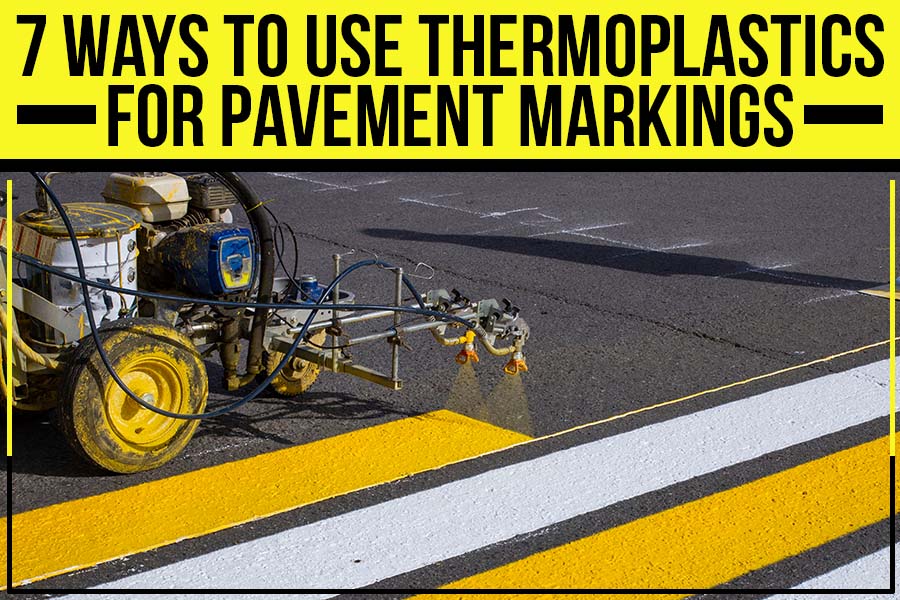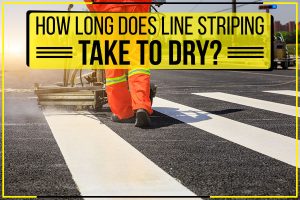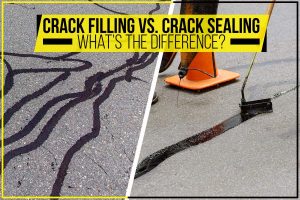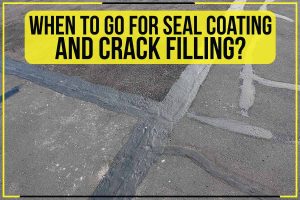Key takeaways:
Thermoplastic is a long-lasting road-marking material initially used in the United States in 1958.
- It is made of glass beads, binder, pigment, and filler.
- Thermoplastic markings can be colored according to requirements by adding pigments.
- The thermoplastic coating hardens fast and adheres firmly to the surface.
- Some advantages of using thermoplastics for road markings are that they dry quickly, are resistant to wear and tear, can be applied in various thicknesses, and are highly visible.
- Thermoplastics can be used for numerous pavement markings such as acceleration/deceleration lanes, stop bars, bike paths, crosswalks, pedestrian walking trails, school zone warning letters, symbol numbers & more.
The road and pavement markings provide direction and safety at intersections, school zones, bike paths, and more. In most cases, these pavement markings are made from thermoplastics. Let’s dive deeper into the world of thermoplastics and how they are used in pavement marking today.
Understanding Thermoplastic:
Thermoplastic is a long-lasting road-marking substance that was initially used in the United States in 1958 and was rapidly adopted by numerous nations around Europe. It is made of glass beads, binder, pigment, and filler. Thermoplastic, as the name implies, is concerned with heat. Dry thermoplastic material is generally heated in a thermostatically controlled pre-heater to a temperature of 338-410 Fahrenheit (°F) and continually agitated until a homogenized liquid is achieved. It is then transferred to an application vehicle. When employed at this temperature, the thermoplastic melts into the top surface of the asphalt, forming a thermal bond.
Thermoplastic markings can be colored according to requirements by adding pigments. The thermoplastic coating hardens fast and adheres firmly to the surface. Extra additives can be added to increase the color retention and reflectivity of the product. Because of this, the thermoplastic coating is ideal for retouching earlier road markings that have faded or require additional reflective characteristics.
What Is the Purpose of Each Ingredient in The Thermoplastic Mixture?
- The synthetic resin allows the hot melt coating to cure quickly and adhere firmly to the road surface.
- Paint additives can make the coating resistant to subsidence, pollution, and color fading.
- Road lines are commonly painted with yellow and white pigments. White pigments mainly consist of titanium dioxide, zinc oxide, and lithophone, whereas yellow pigments primarily consist of heat-resistant yellow lead.
- Packing ingredients, which are added to the paint as filler, ensure the mechanical strength, wear resistance, and color of the paint covering.
- Glass microspheres are used to increase line recognition at night, as well as the brightness and endurance of the marking. A glass bead is a colorless, transparent ball that may be used for light refraction, focusing, and directed reflection.
What Are the Advantages of Using Thermoplastic Road Markings?
Benefit 01: Quick Drying
Downtime caused by placing or retouching road markings can create disruption and confusion, especially in congested regions. Thermoplastic road markings dry quickly, avoiding significant delays.
Benefit 02: Resistant to Wear and Tear
Thermoplastic marks are resistant to wear and tear due to their robust qualities, making them a durable option that does not require frequent re-painting. As a result, they are also a cost-effective and handy option.
Benefit 03: It Is Possible to Apply It in A Range of Thicknesses.
Thermoplastic markings can be made up of several thickness layers. Because of their versatility, they may be utilized in various applications, such as the fabrication of rumble strips, a safety feature that requires the proper thickness to be effective.
Benefit 04: Highly Visible
The addition of reflective beads makes thermoplastic markings more visible in the dark or bad weather, making road users’ experiences significantly safer.
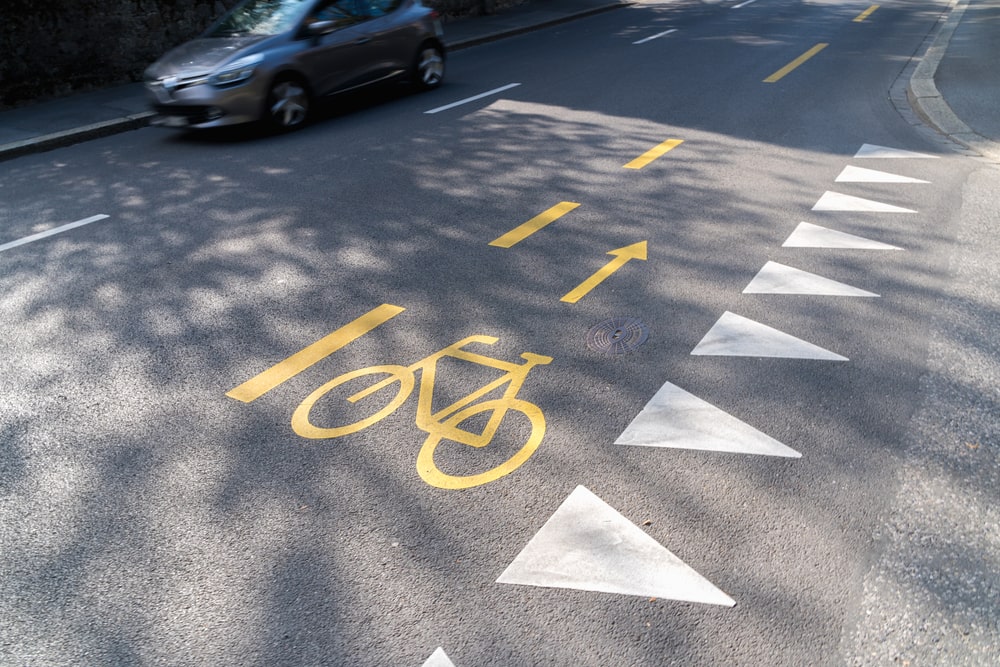
How Are Thermoplastics Used for Pavement Markings?
Thermoplastics can be used to create numerous types of pavement markings, such as:
Acceleration/Deceleration Lanes
Thermoplastics are often used for acceleration and deceleration lanes. They provide motorists with lines indicating when they should accelerate or slow down to enter or exit a highway safely. This helps keep traffic flowing without interruption.
Stop Bars
Stop bars are commonly visible at junctions, indicating where cars must stop before entering an intersection. As you can imagine, these are incredibly important for safety reasons and keeping traffic moving quickly and efficiently.
Bike Paths
If you’ve ever ridden your bike through a city or town, chances are you’ve seen thermoplastics used for bike lanes and paths because the material holds up well over time in all weather conditions. Cyclists can quickly identify where to ride without worrying about fading paint lines!
Crosswalks
Crosswalks are another everyday use for thermoplastics because they allow pedestrians to quickly spot where they can safely cross the street without worrying about faded paint lines disappearing over time due to weathering or other environmental factors.
Pedestrian Walking Trails
Like bike paths, pedestrian walking trails benefit from thermoplastics because of their durability in all weather conditions. This allows people who may be visually impaired or have mobility issues to quickly identify where they should walk without worrying about faded paint lines making it difficult to see their destination.
School Zone Warnings
Thermoplastics are often used near schools to remind drivers that there may be children who need extra caution while driving through the area. This helps create safer streets near schools while allowing traffic to flow normally during peak hours when students might be coming and going from school grounds throughout the day!
Letters, Symbols, Numbers & More
Other uses for thermoplastics include letters, symbols, numbers (such as speed limits), yield signs, arrows, and more that help keep drivers informed about what type of road rules apply so everyone stays safe!
Final Thought:
Thermoplastics offer numerous benefits for pavement marking applications compared to traditional methods such as paint or tape. Whether you want to use them for practical applications like accelerate/deceleration lanes or make your street look cooler with a custom mural design – thermoplastics make it possible! So, the next time you pass by pavement markings on the street – take a closer look – chances are they were made using thermoplastics!
Want to create beautiful thermoplastic marking for your specific needs at affordable rates? Standard Striping Inc serving Prince Frederick, MD, can help! We provide thermoplastic road markings for a variety of applications. Our skilled professionals are ready to design eye-catching thermoplastic road markings for you.
